August 26, 2022, was the opening date of
the Nathalie Emmanuel film "The Invitation."
Wednesday, May 15, 2024
Annals of Philosophy: Savoir “La Différance”
Saturday, May 4, 2024
What Lies Between
"I perceived . . . cinema is that which is between things,
not things [themselves] but between one and another."
— Jean-Luc Godard, "Introduction à une véritable histoire
du cinéma," Albatros , Paris, 1980, p. 145
|
Log24 on 10 Dec. 2008 — |
Log24 on 12 Dec. 2008 —
|
Between the two image-dates above . . .
" 'The jury is still out on how long – and whether – people are actually
going to understand this.' It took the world 150 years to realize
the true power of the printing press . . . ." — Cade Metz
Saturday, February 24, 2024
Li
The Chinese concept of li in yesterday's post "Logos" is related,
if only by metaphor, to the underlying form (sets of "line diagrams")
of patterns in the Cullinane diamond theorem:
"But very possibly the earliest use of li is the one instance that
it appears in the Classic of Poetry (Ode 210) where it refers to
the borders or boundary lines marking off areas in a field.
Here it appears in conjunction with chiang and is explained
as 'to divide into lots (or parcels of land)' (fen-ti )."
— P. 33 of "Li Revisited and Other Explorations"
by Allen Wittenborn, Bulletin of Sung and Yüan Studies
No. 17 (1981), pp. 32-48 (17 pages),
https://www.jstor.org/stable/23497457.
Friday, January 12, 2024
From Sources of the Self , by Charles Taylor
Wednesday, January 3, 2024
Negative Space
A recently coined phrase — "Negative Mathematics" — is related to the
better-known phrase "Negative Space."
The latter is closely related to the proof of the Cullinane diamond theorem.
For the former, see . . .
Related material: The proof symbol, i.e. the Halmos Tombstone.
Monday, February 6, 2023
Clown
For Bill Irwin —
<meta property="article:published_time"
content="2023-02-06T11:00:00.000Z"/>
The Source —
view-source:https://www.newyorker.com/magazine/2023/02/13/
finding-laughs-amid-the-gray-in-becketts-endgame
See as well the previous post and . . .
Interality Studies
|
You, Xi-lin; Zhang, Peter. "Interality in Heidegger."
The term "interology" is meant as an interventional alternative to traditional Western ontology. The idea is to help shift people's attention and preoccupation from subjects, objects, and entities to the interzones, intervals, voids, constitutive grounds, relational fields, interpellative assemblages, rhizomes, and nothingness that lie between, outside, or beyond the so-called subjects, objects, and entities; from being to nothing, interbeing, and becoming; from self-identicalness to relationality, chance encounters, and new possibilities of life; from "to be" to "and … and … and …" (to borrow Deleuze's language); from the actual to the virtual; and so on. As such, the term wills nothing short of a paradigm shift. Unlike other "logoi," which have their "objects of study," interology studies interality, which is a non-object, a no-thing that in-forms and constitutes the objects and things studied by other logoi. |
Some remarks from this journal on April 1, 2015 —
Manifest O
|
| 83-06-21 | An invariance of symmetry The diamond theorem on a 4x4x4 cube, and a sketch of the proof. |
| 83-10-01 | Portrait of O A table of the octahedral group O using the 24 patterns from the 2×2 case of the diamond theorem. |
| 83-10-16 | Study of O A different way of looking at the octahedral group, using cubes that illustrate the 2x2x2 case of the diamond theorem. |
| 84-09-15 | Diamonds and whirls Block designs of a different sort — graphic figures on cubes. See also the University of Exeter page on the octahedral group O. |
The above site, finitegeometry.org/sc, illustrates how the symmetry
of various visual patterns is explained by what Zhang calls "interality."
Sunday, February 5, 2023
Negative Space: Examples
Patterns in the space
between subsquares —
Figures in the space
between fingers —

Monday, November 28, 2022
L’écart, l’entre and so forth
See as well . . .
"But let us return to the concepts of the divide [écart ]
and interspace [l'entre ], which figure prominently in my work…."
Friday, August 19, 2022
Mathematical Evolution
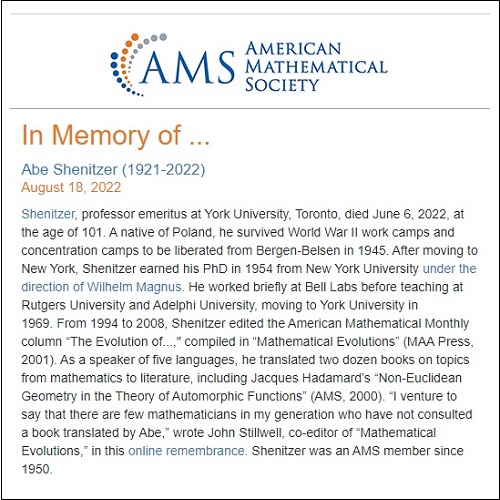
From the Stillwell remembrance, a Shenitzer quote —
"An English major may or may not be a novelist or a poet,
but would undoubtedly be expected to be able to evaluate
a novel or a poem. The term 'English major' implies some
historical, philosophical, and evaluative training and
competence. It is sad but true that the term 'mathematician'
does not imply corresponding training and competence."
Related material — The previous post, and posts tagged Super-8.
Cut Geometry
"… the new geometries … provide the best example of
the power of the human mind, for the mind had to defy
and overcome habit, intuition, and sense perceptions
to produce these geometries."
— Morris Kline, Mathematics in Western Culture ,
Oxford University Press, 1953, page 430.
Points as Cuts —
Thursday, August 18, 2022
The Razr’s Edge
Monday, August 1, 2022
Interality Again: The Art of the Gefüge
"Schufreider shows that a network of linguistic relations
is set up between Gestalt, Ge-stell, and Gefüge, on the
one hand, and Streit, Riß, and Fuge, on the other . . . ."
— From p. 14 of French Interpretations of Heidegger ,
edited by David Pettigrew and François Raffoul.
State U. of New York Press, Albany, 2008. (Links added.)
One such "network of linguistic relations" might arise from
a non-mathematician's attempt to describe the diamond theorem.
(The phrase "network of linguistic relations" appears also in
Derrida's remarks on Husserl's Origin of Geometry .)
For more about "a system of slots," see interality in this journal.
The source of the above prefatory remarks by editors Pettigrew and Raffoul —
"If there is a specific network that is set up in 'The Origin of the Work of Art,'
a set of structural relations framed in linguistic terms, it is between
Gestalt, Ge-stell and Gefüge, on the one hand, and Streit, Riß and Fuge,
on the other; between (as we might try to translate it)
configuration, frame-work and structure (system), on the one hand, and
strife, split (slit) and slot, on the other. On our view, these two sets go
hand in hand; which means, to connect them to one another, we will
have to think of the configuration of the rift (Gestalt/Riß) as taking place
in a frame-work of strife (Ge-stell/Streit) that is composed through a system
of slots (Gefüge/Fuge) or structured openings."
— Quotation from page 197 of Schufreider, Gregory (2008):
"Sticking Heidegger with a Stela: Lacoue-Labarthe, art and politics."
Pp. 187-214 in David Pettigrew & François Raffoul (eds.),
French Interpretations of Heidegger: An Exceptional Reception.
State University of New York Press, 2008.
Update at 5:14 AM ET Wednesday, August 3, 2022 —

See also "six-set" in this journal.
"There is such a thing as a six-set."
— Saying adapted from a 1962 young-adult novel.
Saturday, May 7, 2022
Interality Meets the Seven Seals
Related material — Posts tagged Interality and Seven Seals.
From Hermann Weyl's 1952 classic Symmetry —
"Galois' ideas, which for several decades remained
a book with seven seals but later exerted a more
and more profound influence upon the whole
development of mathematics, are contained in
a farewell letter written to a friend on the eve of
his death, which he met in a silly duel at the age of
twenty-one. This letter, if judged by the novelty and
profundity of ideas it contains, is perhaps the most
substantial piece of writing in the whole literature
of mankind."
Friday, May 6, 2022
Interality and the Bead Game
WIkipedia on the URL suffix ".io" —
"In computer science, "IO" or "I/O" is commonly used
as an abbreviation for input/output, which makes the
.io domain desirable for services that want to be
associated with technology. .io domains are often used
for open source projects, application programming
interfaces ("APIs"), startup companies, browser games,
and other online services."
An association with the Bead Game from a post of April 7, 2018 —
|
Glasperlenspiel passage quoted here in Summa Mythologica —
“"I suddenly realized that in the language, or at any rate A less poetic meditation on the above 4x4x4 design cube —
"I saw that in the alternation between front and back, See also a related remark by Lévi-Strauss in 1955:
"…three different readings become possible: |
The recent use by a startup company of the URL "interality.io" suggests
a fourth reading for the 1955 list of Lévi-Strauss — in and out —
i.e., inner and outer group automorphisms — from a 2011 post
on the birthday of T. S. Eliot :
A transformation:
Click on the picture for details.
Interality and the I Ching
See "Flusser and the I Ching," by Peter Zhang.
Zhang has written extensively on the concept of "interality,"
a term coined by his colleague Geling Shang.
For interality as the mathematics underlying the natural
automorphism group of the I Ching, see my own work.
Thursday, May 5, 2022
“Interality” as a Metaverse Term

See also "Interality" in this journal.
Update of 8:56 AM ET
Friday, May 6, 2022:
“You have to all have a shared language of all this stuff,
otherwise it can get pretty confusing,” Waldron said.
The Waldron quote is from . . .
Later, at 9:29 AM ET . . .
See as well other posts now tagged Strange Change.
Sunday, April 24, 2022
Structuralism: Three Betweens
|
Tuesday, November 3, 2009 Filed under: General,Geometry — Tags: Glasperlenspiel, Solomon Marcus — m759 @ 10:10 PM Book review by Jadran Mimica in Oceania, Vol. 74, 2003: "In his classic essay of 1955 'The Structural Study of Myth' Levi-Strauss came up with a universal formula of mythopoeic dynamics [fx(a) : fy(b) :: fx(b) : fa-1(y)] that he called canonical 'for it can represent any mythic transformation'. This formulation received its consummation in the four massive Mythologiques volumes, the last of which crystallises the fundamental dialectics of mythopoeic thought: that there is 'one myth only' and the primal ground of this 'one' is 'nothing'. The elucidation of the generative matrix of the myth-work is thus completed as is the self-totalisation of both the thinker and his object." So there. At least one mathematician has claimed that the Levi-Strauss formula makes sense. (Jack Morava, arXiv pdf, 2003.) I prefer the earlier (1943) remarks of Hermann Hesse on transformations of myth: "…in the spirit of the Glass Bead Game, everything actually was all-meaningful, that every symbol and combination of symbols led not hither and yon, not to single examples, experiments, and proofs, but into the center, the mystery and innermost heart of the world, into primal knowledge. Every transition from major to minor in a sonata, every transformation of a myth or a religious cult, every classical or artistic formulation was, I realized in that flashing moment, if seen with a truly meditative mind, nothing but a direct route into the interior of the cosmic mystery, where in the alternation between inhaling and exhaling, between heaven and earth, between Yin and Yang, holiness is forever being created." |
Wednesday, March 30, 2022
“Design is how it works.” — Steve Jobs
See box-space.design.
Related cinematic remarks —
|
From Third Text , 2013, Vol. 27, No. 6, pp. 774–785 — "Genealogy of the Image in Histoire(s) du Cinéma : Godard, Warburg and the Iconology of the Interstice" * * * * P. 777 — Godard conceives of the image only in the plural, in the intermediate space between two images, be it a prolonged one (in Histoire(s) there are frequent instances of black screens) or a non-existent one (superimposition, co-presence of two images on screen). He comments: ‘[For me] it’s always two, begin by showing two images rather than one, that’s what I call image, the one made up of two’ [18] and elsewhere, ‘I perceived . . . cinema is that which is between things, not things [themselves] but between one and another.’ [19] 18. Jean-Luc Godard and Youssef Ishaghpour, "Archéologie du cinéma et mémoire du siècle," Farrago ,Tours, 2000, p. 27. The title of this work is reflective of the Godardian agenda that permeates Histoire(s) . 19. Jean-Luc Godard, "Introduction à une véritable histoire du cinéma," Albatros , Paris,1980, p. 145 |
See as well Warburg in this journal.
Tuesday, December 21, 2021
Square to Block
Related geometry . . .
Many, of course, have not yet mastered the square.
Related art . . .
See Object of Beauty.
Monday, November 29, 2021
Abstraction and Structure
For the mathematical properties of the vertical and horizontal
white grid lines above, see the Cullinane theorem.
Wednesday, September 15, 2021
The Shining Darkness
"what shines, the shining darkness, yes, is the invisible in the visible"
— From Jon Fosse — The Other Name: Septology I-II .
Translated from the Norwegian by Damion Searls.
Fitzcarraldo Editions (October 10, 2019).
Monday, August 9, 2021
Sunday, March 21, 2021
Mind the Gaps…
Continues from March 17.
See as well some remarks on Chinese perspective
in the Log24 post “Gate” of June 13, 2013.
Wednesday, March 17, 2021
Saturday, October 17, 2020
Modernist Cuts

"The bond with reality is cut."
— Hans Freudenthal, 1962

Related screenshot of a book review
from the November AMS Notices —

Saturday, September 5, 2020
Ikonologie des Zwischenraums
The title is from a Cornell page in the previous post.

Related material (click to enlarge) —
The above remarks on primitive mentality suggest
a review of Snakes on a Plane.
Friday, June 26, 2020
Persons and Operators and Things
| Harvard University Press on a book, Persons and Things, it published on March 31, 2010 Moving effortlessly between symbolist poetry and Barbie dolls, artificial intelligence and Kleist, Kant, and Winnicott, Barbara Johnson not only clarifies psychological and social dynamics; she also re-dramatizes the work of important tropes—without ever losing sight of the ethical imperative with which she begins: the need to treat persons as persons. In Persons and Things , Johnson turns deconstruction around to make a fundamental contribution to the new aesthetics. She begins with the most elementary thing we know: and reveals that their claims upon us are fraudulent. Johnson revolutionizes the method by showing that the inanimate thing exposed as a delusion is central to fantasy life, that fantasy life, however deluded, should be taken seriously, and that although a work of art “is formed around something missing,” this “void is its vanishing point, not its essence.” She shows deftly and delicately that the void inside Keats’s urn, Heidegger’s jug, or Wallace Stevens’s jar forms the center around which we tend to organize our worlds. The new aesthetics should restore fluidities between persons and things. In pursuing it, Johnson calls upon Ovid, Keats, Poe, Plath, and others who have inhabited this in-between space. The entire process operates via a subtlety that only a critic of Johnson’s caliber could reveal to us. |
I prefer the more straightforward insanity of Operators and Things .
Barbara Johnson reportedly died on Aug. 27, 2009. See that date
in other posts now tagged Autistic Enchantment. (That phrase is
the sort of sneering tag one may expect from deplorable academics.)
Friday, April 17, 2020
A Mechanism of Fission
The above title was suggested by the previous post, Explosive Remarks.

Sunday, February 9, 2020
Hors d’Oeuvre
From the May Day 2016 link above, in "Sunday Appetizer from 1984" —
The 2015 German edition of Beautiful Mathematics , a 2011 Mathematical Association of America (MAA) book, was retitled Mathematische Appetithäppchen — Mathematical Appetizers . The German edition mentions the author's source, omitted in the original American edition, for his section 5.17, "A Group of Operations" (in German, 5.17, "Eine Gruppe von Operationen")—
That source was a document that has been on the Web since 2002. The document was submitted to the MAA in 1984 but was rejected. The German edition omits the document's title, and describes it as merely a source for "further information on this subject area." |
From the Gap Dance link above, in "Reading for Devil's Night" —
“Das Nichts nichtet.” — Martin Heidegger.
And "Appropriation Appropriates."
Tuesday, February 4, 2020
Cleavage
From Martin Heidegger's
Contributions to Philosophy (From Enowning) ,
Translated by Parvis Emad and Kenneth Maly,
Indiana University Press, 1999 (first published in German
in 1989 as Beiträge zur Philosophie (Vom Ereignis) but
written in 1936-1938 —
"The 'between' [das Zwischen ] is the simple 'bursting open'
that enowns be-ing to a being, which up until then is held back
from what is ownmost to it and is not yet to be named a being.
This 'bursting open' is the clearing for the sheltered. But the
'bursting open' does not disperse. and the clearing is not a mere
emptiness.
The 'between' [das Zwischen ] which bursts open gathers
what it removes into the open of its strifing and refusing
belongingness, moves unto the ab-ground , out of which everything
(god, man, world, earth) recoils in swaying into itself and thus leaves
to be-ing the unique decidedness of en-ownment."
— 270, "The Essential Sway of Be-ing" (p. 341)
"Enownment and enstrifing, historical grounding and decision,
uniqueness and the onefold, what has the character of
the between [Zwischenhafte ] and the cleavage [Geklüft ] —
they never name the essential sway of be-ing as properties
but rather in each case the whole essential swaying* of its essential
sway."
— 270, "The Essential Sway of Be-ing" (p. 342)
* For "swaying" as "unfolding," see (for instance)
the Stanford Encyclopedia of Philosophy and
also George Kovacs, Thinking and Be-ing in Heidegger's
Beiträge zur Philosophie (Vom Ereignis) ,
Zeta Books, 2015.
Thursday, January 23, 2020
The Demarcation of Nothing
"… nothing could be demarcated as 'hors d'oeuvre'…"
— Geoffrey Hartman in his Haskins Lecture for 2000
(quoted here on Columbus Day, 2004).
See also May Day 2016 and Gap Dance.
Wednesday, January 22, 2020
Gap Dance
From Wallace Stevens, "The Man with the Blue Guitar":
IX
And the color, the overcast blue
Of the air, in which the blue guitar
Is a form, described but difficult,
And I am merely a shadow hunched
Above the arrowy, still strings,
The maker of a thing yet to be made . . . .

"Arrowy, still strings" from the diamond theorem
Wednesday, January 15, 2020
Paradigm Shift
Illustration, from a search in this journal for “Symplectic” —
 .
.
Some background: Rift-design in this journal and …
Saturday, December 14, 2019
Colorful Tale
The above image is from
"A Four-Color Theorem:
Function Decomposition Over a Finite Field,"
http://finitegeometry.org/sc/gen/mapsys.html.
These partitions of an 8-set into four 2-sets
occur also in Wednesday night's post
Miracle Octad Generator Structure.
This post was suggested by a Daily News
story from August 8, 2011, and by a Log24
post from that same date, "Organizing the
Mine Workers" —

Monday, December 2, 2019
Aesthetics at Harvard
"What the piece of art is about is the gray space in the middle."
— David Bowie, as quoted in the above Crimson piece.
Bowie's "gray space" is the space between the art and the beholder.
I prefer the gray space in the following figure —
Context: The Trinity Stone (Log24, June 4, 2018).
Thursday, June 13, 2019
Tuesday, May 21, 2019
Monday, May 20, 2019
The Bond with Reality
Tuesday, May 7, 2019
Breach
"Honored in the Breach:
Graham Bader on Absence as Memorial"
Artforum International , April 2012
|
. . . . "In the wake of a century marked by inconceivable atrocity, the use of emptiness as a commemorative trope has arguably become a standard tactic, a default style of public memory. The power of the voids at and around Ground Zero is generated by their origin in real historical circumstance rather than such purely commemorative intent: They are indices as well as icons of the losses they mark.
Nowhere is the negotiation between these two possibilities–on the one hand, the co-optation of absence as tasteful mnemonic trope; on the other, absence's disruptive potential as brute historical scar–more evident than in Berlin, a city whose history, as Andreas Huyssen has argued, can be seen as a 'narrative of voids.' Writing in 1997, Huyssen saw this tale culminating in Berlin's post-wall development, defined equally by an obsessive covering-over of the city's lacunae–above all in the elaborate commercial projects then proliferating in the miles-long stretch occupied until 1989 by the Berlin Wall–and a carefully orchestrated deployment of absence as memorial device, particularly in the 'voids' integrated by architect Daniel Libeskind into his addition to the Berlin Museum, now known as the Jewish Museum Berlin." |
See also Breach in this journal.
Monday, May 6, 2019
Saturday, May 4, 2019
Inside the White Cube
See also Espacement and The Thing and I.
Wednesday, April 24, 2019
Critical Visibility
Correction — "Death has 'the whole spirit sparkling…'"
should be "Peace after death has 'the whole spirit sparkling….'"
The page number, 373, is a reference to Wallace Stevens:
Collected Poetry and Prose , Library of America, 1997.
See also the previous post, "Critical Invisibility."
Tuesday, April 23, 2019
Critical Invisibility
From Gotay and Isenberg, "The Symplectization of Science,"
Gazette des Mathématiciens 54, 59-79 (1992):
"… what is the origin of the unusual name 'symplectic'? ….
Its mathematical usage is due to Hermann Weyl who,
in an effort to avoid a certain semantic confusion, renamed
the then obscure 'line complex group' the 'symplectic group.'
… the adjective 'symplectic' means 'plaited together' or 'woven.'
This is wonderfully apt…."
On "The Emperor's New Clothes" —
|
Andersen’s weavers, as one commentator points out, are merely insisting that “the value of their labor be recognized apart from its material embodiment.” The invisible cloth they weave may never manifest itself in material terms, but the description of its beauty (“as light as spiderwebs” and “exquisite”) turns it into one of the many wondrous objects found in Andersen’s fairy tales. It is that cloth that captivates us, making us do the imaginative work of seeing something beautiful even when it has no material reality. Deeply resonant with meaning and of rare aesthetic beauty—even if they never become real—the cloth and other wondrous objets d’art have attained a certain degree of critical invisibility. — Maria Tatar, The Annotated Hans Christian Andersen (W. W. Norton & Company, 2007). Kindle Edition. |
A Certain Dramatic Artfulness
Monday, March 25, 2019
Sunday, March 24, 2019
Espacement: Geometry of the Interstice in Literary Theory
"You said something about the significance of spaces between
elements being repeated. Not only the element itself being repeated,
but the space between. I'm very interested in the space between.
That is where we come together." — Peter Eisenman, 1982
|
https://www.parrhesiajournal.org/ Parrhesia No. 3 • 2007 • 22–32
(Up) Against the (In) Between: Interstitial Spatiality by Clare Blackburne Blackburne — www.parrhesiajournal.org 24 — "The excessive notion of espacement as the resurgent spatiality of that which is supposedly ‘without space’ (most notably, writing), alerts us to the highly dynamic nature of the interstice – a movement whose discontinuous and ‘aberrant’ nature requires further analysis." Blackburne — www.parrhesiajournal.org 25 — "Espacement also evokes the ambiguous figure of the interstice, and is related to the equally complex derridean notions of chora , différance , the trace and the supplement. Derrida’s reading of the Platonic chora in Chora L Works (a series of discussions with the architect Peter Eisenman) as something which defies the logics of non-contradiction and binarity, implies the internal heterogeneity and instability of all structures, neither ‘sensible’ nor ‘intelligible’ but a third genus which escapes conceptual capture.25 Crucially, chora , spacing, dissemination and différance are highly dynamic concepts, involving hybridity, an ongoing ‘corruption’ of categories, and a ‘bastard reasoning.’26 Derrida identification of différance in Margins of Philosophy , as an ‘unappropriable excess’ that operates through spacing as ‘the becoming-space of time or the becoming-time of space,’27 chimes with his description of chora as an ‘unidentifiable excess’ that is ‘the spacing which is the condition for everything to take place,’ opening up the interval as the plurivocity of writing in defiance of ‘origin’ and ‘essence.’28 In this unfolding of différance , spacing ‘insinuates into presence an interval,’29 again alerting us to the crucial role of the interstice in deconstruction, and, as Derrida observes in Positions , its impact as ‘a movement, a displacement that indicates an irreducible alterity’: ‘Spacing is the impossibility for an identity to be closed on itself, on the inside of its proper interiority, or on its coincidence with itself. The irreducibility of spacing is the irreducibility of the other.’30"
25. Quoted in Jeffrey Kipnis and Thomas Leeser, eds., 26. Ibid, 25.
27. Derrida, Margins of Philosophy. 28. Derrida, Chora L Works , 19 and 10. 29. Ibid, 203. 30. Derrida, Positions , 94. |
Saturday, March 23, 2019
Another Typology
"You said something about the significance of spaces between
elements being repeated. Not only the element itself being repeated,
but the space between. I'm very interested in the space between.
That is where we come together." — Peter Eisenman, 1982
Thursday, March 21, 2019
Geometry of Interstices
Finite Galois geometry with the underlying field the simplest one possible —
namely, the two-element field GF(2) — is a geometry of interstices :
For some less precise remarks, see the tags Interstice and Interality.
The rationalist motto "sincerity, order, logic and clarity" was quoted
by Charles Jencks in the previous post.
This post was suggested by some remarks from Queensland that
seem to exemplify these qualities —

Tuesday, March 5, 2019
The Eightfold Cube and PSL(2,7)
For PSL(2,7), this is ((49-1)(49-7))/((7-1)(2))=168.
The group GL(3,2), also of order 168, acts naturally
on the set of seven cube-slicings below —
Another way to picture the seven natural slicings —
Application of the above images to picturing the
isomorphism of PSL(2,7) with GL(3,2) —
For a more detailed proof, see . . .
Saturday, September 29, 2018
“Ikonologie des Zwischenraums”
The title is from Warburg. The Zwischenraum lines and shaded "cuts"
below are to be added together in characteristic two, i.e., via the
set-theoretic symmetric difference operator.
Saturday, September 15, 2018
Eidetic Reduction in Geometry
|
"Husserl is not the greatest philosopher of all times. — Kurt Gödel as quoted by Gian-Carlo Rota Some results from a Google search — Eidetic reduction | philosophy | Britannica.com Eidetic reduction, in phenomenology, a method by which the philosopher moves from the consciousness of individual and concrete objects to the transempirical realm of pure essences and thus achieves an intuition of the eidos (Greek: “shape”) of a thing—i.e., of what it is in its invariable and essential structure, apart … Phenomenology Online » Eidetic Reduction
The eidetic reduction: eidos. Method: Bracket all incidental meaning and ask: what are some of the possible invariate aspects of this experience? The research Eidetic reduction – New World Encyclopedia Sep 19, 2017 – Eidetic reduction is a technique in Husserlian phenomenology, used to identify the essential components of the given phenomenon or experience. |
For example —
The reduction of two-colorings and four-colorings of a square or cubic
array of subsquares or subcubes to lines, sets of lines, cuts, or sets of
cuts between* the subsquares or subcubes.
See the diamond theorem and the eightfold cube.
* Cf. posts tagged Interality and Interstice.
Thursday, September 13, 2018
Godard and Interality
The previous post, "One Plus One," suggests some further
art-historical remarks on interality —
|
From Third Text , 2013, Vol. 27, No. 6, pp. 774–785 — "Genealogy of the Image in Histoire(s) du Cinéma : Godard, Warburg and the Iconology of the Interstice" * * * * P. 775 — My discussion will focus on the significance of the concept of the ‘space in-between,’ its importance for Godard’s work and its role in a relational historiography of images more broadly. I hope to corroborate how Godard functions as a twenty-first century archaeologist of the moving image, constructing a meta-cinematic collage that, while consisting of an indexing of (almost exclusively) pre-existing filmic samples, ends up becoming a hybrid work of art in its own right. Godard, in the final analysis, expands the Warburgian programme of iconology into that of a cinematographic iconology of the interstice. * * * * P. 777 — Godard conceives of the image only in the plural, in the intermediate space between two images, be it a prolonged one (in Histoire(s) there are frequent instances of black screens) or a non-existent one (superimposition, co-presence of two images on screen). He comments: ‘[For me] it’s always two, begin by showing two images rather than one, that’s what I call image, the one made up of two’ [18] and elsewhere, ‘I perceived . . . cinema is that which is between things, not things [themselves] but between one and another.’ [19] 18. Jean-Luc Godard and Youssef Ishaghpour, "Archéologie du cinéma et mémoire du siècle," Farrago ,Tours, 2000, p. 27. The title of this work is reflective of the Godardian agenda that permeates Histoire(s) . 19. Jean-Luc Godard, "Introduction à une véritable histoire du cinéma," Albatros , Paris,1980, p. 145 * * * * P. 783 — If it is in ‘the in-between’ that thought is born, then for Godard cinematography as ‘a form that thinks . . . was born with the advent of modern painting.’ [62] 62. Godard and Ishaghpour, op. cit., pp 45–46. * * * * P. 785 — Warburg commented on the signification of the black spaces that he placed between images in his analysis of the network of intervals in Mnemosyne , by quoting Johann Wolfgang Goethe’s dictum ‘the truth inhabits the middle space.’ [68] This citation induces a feeling of déjà-vu for the viewer of Histoire(s). The link was not missed by Warburg himself, as one of his diary entries testifies: ‘We can compare this phenomenon [the iconology of the interval] to that of the cinematic montage, the domain of the interpretation is an intervallic one.’ [69] 68. Warburg, Mnemosyne , pp 135–146. 69. Warburg is quoted in Didi-Huberman, L’image survivante, p. 503. (Georges Didi-Huberman, L’image survivante. Histoire de l’art et temps des fantômes selon Aby Warburg , Minuit, Paris, 2002) |
Saturday, September 8, 2018
Monday, July 23, 2018
Space 101
From the April 1st publication date of "Interality Shows Through,"
by Geling Shang —
See too yesterday's post Space.
Sunday, July 22, 2018
Sunday, January 7, 2018
Saturday, January 6, 2018
Report from Red Mountain
Tom Wolfe in The Painted Word (1975):
“It is important to repeat that Greenberg and Rosenberg
did not create their theories in a vacuum or simply turn up
with them one day like tablets brought down from atop
Green Mountain or Red Mountain (as B. H. Friedman once
called the two men). As tout le monde understood, they
were not only theories but … hot news,
straight from the studios, from the scene.”
Harold Rosenberg in The New Yorker (click to enlarge)—
See also Interality and the Eightfold Cube .
Friday, January 5, 2018
Types of Ambiguity
From "The Principle of Sufficient Reason," by George David Birkhoff,
in "Three Public Lectures on Scientific Subjects,"
delivered at the Rice Institute, March 6, 7, and 8, 1940 —
From the same lecture —
|
Up to the present point my aim has been to consider a variety of applications of the Principle of Sufficient Reason, without attempting any precise formulation of the Principle itself. With these applications in mind I will venture to formulate the Principle and a related Heuristic Conjecture in quasi-mathematical form as follows: PRINCIPLE OF SUFFICIENT REASON. If there appears in any theory T a set of ambiguously determined ( i e . symmetrically entering) variables, then these variables can themselves be determined only to the extent allowed by the corresponding group G. Consequently any problem concerning these variables which has a uniquely determined solution, must itself be formulated so as to be unchanged by the operations of the group G ( i e . must involve the variables symmetrically). HEURISTIC CONJECTURE. The final form of any scientific theory T is: (1) based on a few simple postulates; and (2) contains an extensive ambiguity, associated symmetry, and underlying group G, in such wise that, if the language and laws of the theory of groups be taken for granted, the whole theory T appears as nearly self-evident in virtue of the above Principle. The Principle of Sufficient Reason and the Heuristic Conjecture, as just formulated, have the advantage of not involving excessively subjective ideas, while at the same time retaining the essential kernel of the matter. In my opinion it is essentially this principle and this conjecture which are destined always to operate as the basic criteria for the scientist in extending our knowledge and understanding of the world. It is also my belief that, in so far as there is anything definite in the realm of Metaphysics, it will consist in further applications of the same general type. This general conclusion may be given the following suggestive symbolic form:
While the skillful metaphysical use of the Principle must always be regarded as of dubious logical status, nevertheless I believe it will remain the most important weapon of the philosopher. |
Related remarks by a founding member of the Metaphysical Club:
See also the previous post, "Seven Types of Interality."
Seven Types of Interality*
* See the term interality in this journal.
For many synonyms, see
“The Human Seriousness of Interality,”
by Peter Zhang, Grand Valley State University,
China Media Research 11(2), 2015, 93-103.
Thursday, January 4, 2018
Perspectives from a Chinese Jar
" . . . Only by the form, the pattern,
Can words or music reach
The stillness, as a Chinese jar still
Moves perpetually in its stillness."
— T. S. Eliot, Four Quartets
"The Grand Valley spirit never dies."
— Adapted from the Tao Te Ching
Monday, January 16, 2017
Interality Illustrated
For the "interality" of the title, click on the tag.
Click the above image for posts tagged "The Positive."
Sunday, January 15, 2017
April First Interality
Data for an essay titled "Interality in Heidegger" —
See also Log24 posts
on that same date —
April 1, 2015.







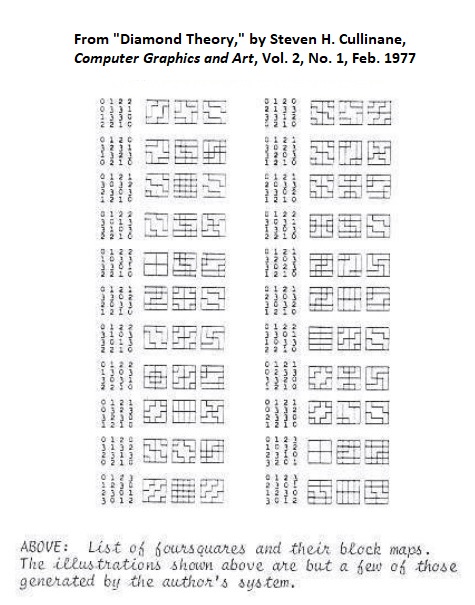
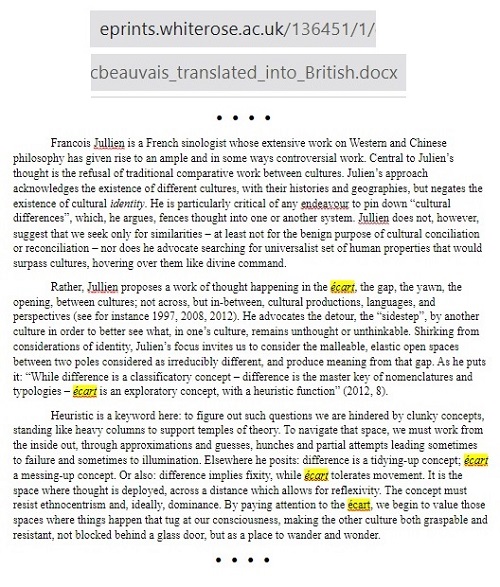
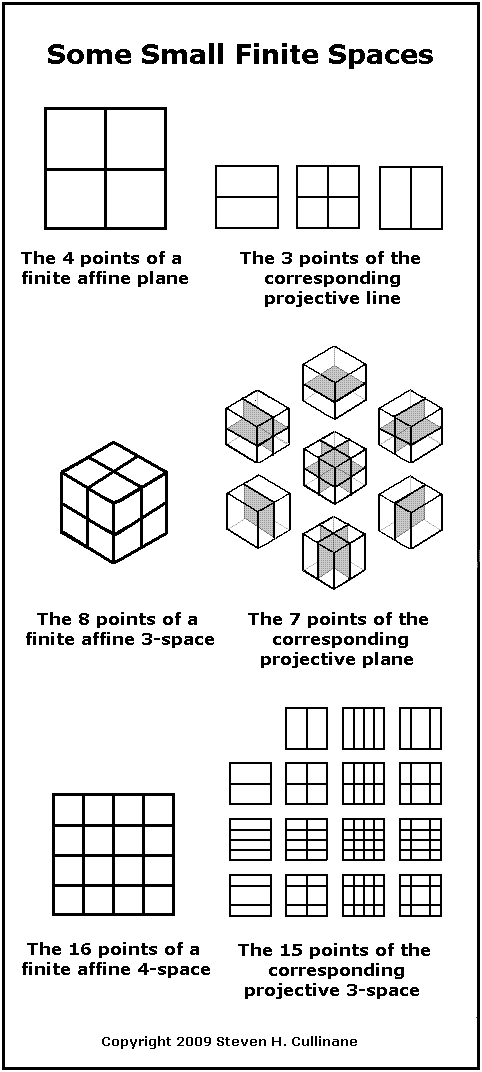







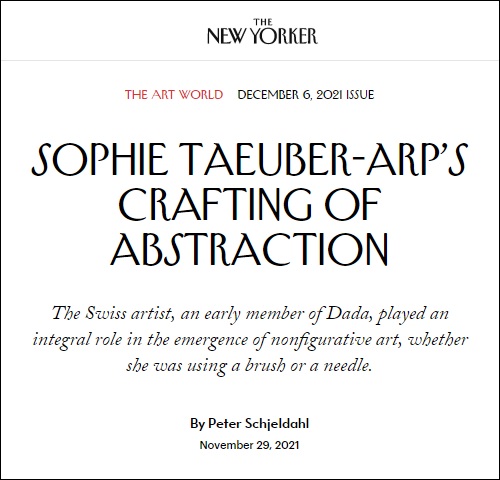


















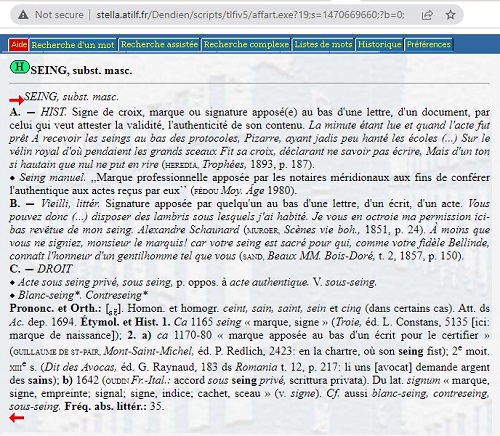





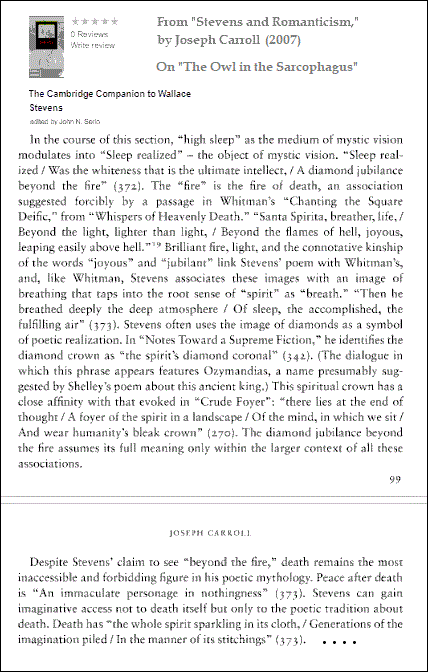









.gif)





















